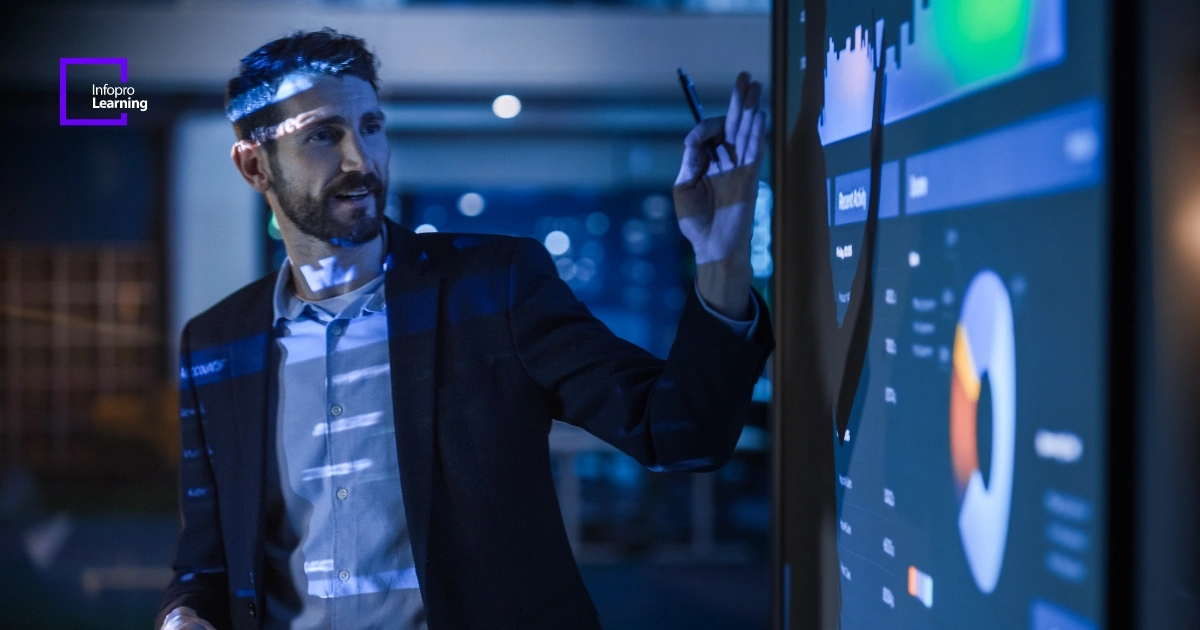Over the last decade, the role of the L&D function has significantly transitioned. Previously considered a peripheral function focused on compliance training, L&D is now a strategic driver of organizational success. Today’s employees expect personalized, engaging, and accessible learning experiences that enable them to grow in their roles and prepare for what comes next. At the same time, organizations want to close skill gaps, reduce turnover, and remain competitive in fast-changing markets.
Meeting these expectations is no easy task. L&D teams face an increasingly complex landscape of new technologies, diverse learner needs, and strict budget constraints. Even the most well-intentioned training programs can fail without the right tools and strategies. This is where strategic technology consulting becomes essential. With the help of learning technology consulting experts, L&D teams can build solutions that meet organizational needs, improve learner experience, and drive measurable outcomes.
The Power of L&D Technology Strategies
A strong L&D technology strategy is at the core of success for modern L&D initiatives. These strategies focus on choosing, implementing, and leveraging technologies that improve the entire learning ecosystem—from content creation and delivery to performance, tracking and analytics. An effective technology strategy ensures L&D efforts are scalable, cost-effective, and aligned with business objectives.
Here are some elements of good L&D tech strategies:
1) Learning Management Systems (LMS): A centralized source for managing and delivering training programs. Modern platforms offer features such as mobility, gamification, and AI-driven personalization to boost engagement.
2) Microlearning Platforms: Microlearning platforms provide bite-sized content that employees can access whenever necessary, allowing flexibility and more digestible learning.
3) Virtual and Augmented Reality (VR/AR): VR and AR provide immersive experiences ideal for training in high-risk or technical positions.
4) Artificial Intelligence (AI): AI-powered tools have also gained a toehold in the learning & development space, where they can analyze the learner’s data, recommend personalized content, and automate administrative tasks, freeing up the L&D teams to focus on strategy.
5) Collaboration Tools: Through tools like Microsoft Teams or Slack, learning is woven into daily workflows, and a culture of continual improvement is encouraged.
However, choosing the right technologies is only part of the battle. Even the most potent tools can fail to deliver value if misaligned with organizational goals. This is where learning technology consulting can make a difference.
The Role of Learning Technology Consulting
Learning technology consulting helps you match the technology roadmap with your L&D goals. Consultants bring the expertise needed to assess needs, evaluate tools, and design tailored solutions that deliver results. Here’s how consulting improves L&D results:
1. Needs Assessment and Strategy Development
No two organizations are the same, whether from an objectives or challenges perspective or the learner demographics. There is no one-size-fits-all solution for technology adoption. From here, learning technology consultants perform a comprehensive needs assessment to understand the organization’s current learning and development state, identify pain points, and establish strategic goals. Then, they create a bespoke L&D technology strategy to support those goals.
A manufacturing company may require VR-based training to practice complex machinery, while a tech firm may need microlearning to upskill employees on new software —all within budget constraints.
2. Selecting and Implementing the Right Technology
The market is plagued with L&D tools, from LMS platforms to AI-driven analytics solutions; selecting the right technology can be daunting Choosing the right ones can be overwhelming. Learning technology consultants evaluate the options available through functionality, scalability, and integration. They also help organizations through implementation to ensure a smooth adoption with minimal disruption to existing workflows.
For example, consultants could help connect an LMS to HR systems to create seamless onboarding or hook a microlearning platform with collaboration tools to make learning part of day-to-day work. Their expertise guarantees the appropriate use of technologies that deliver a maximum return on investment (ROI).
3. Change Management and Training
Bringing in new technologies frequently necessitates a cultural change within the organization. Employees and teams often resist change due to unfamiliarity or fear of disruption. Learning technology consultants build the change management aspect of implementation, including training programs, communication plans, and stakeholder engagement strategies. This ensures that everyone — leadership included, frontline employees who may have been wary of something new — adopts the new tools and grasps their value.
4. Measuring Impact and Continuous Improvement
For L&D teams, one of their biggest challenges is demonstrating the impact of their programs. Learning technology consultants aid organizations in defining key performance indicators (KPIs) and how to use analytics to measure the outcomes. This data helps determine the ROI of decisions—be it improved performance, higher engagement, or reduced costs. They also offer continuous assistance to optimize strategies and integrate new technologies when necessary.
Overcoming Common Challenges
The advantages of L&D technology strategies and learning technology consulting are obvious, but organizations struggle to implement new methods. These include:
- Budget Constraints: Investing in new technologies can be costly, especially for small or mid-sized organizations. Consultants help prioritize solutions that deliver the highest ROI within budget limits.
- Resistance to Change: Employees and leadership may hesitate to adopt new tools. Change management strategies led by consultants address this resistance and build buy-in.
- Integration Issues: New technologies must work seamlessly with existing systems. Consultants ensure compatibility and streamline integration processes.
- Skill Gaps: L&D teams may lack the expertise to manage advanced technologies. Consultants provide training and support to bridge these gaps.
By addressing these challenges proactively, learning technology consultants enable organizations to unlock the full potential of their L&D programs.
Conclusion
Corporate training is being disrupted from within as L&D teams embrace an era of change. There’s an increasing need for strategic technology consulting to help organizations choose the right tools, implement them effectively, and measure impact. Implementing L&D technology in organizations can help achieve this via engaging, personalized learning experiences that foster employee performance and drive growth.
Whether you want to future-proof your organizational LMS, incorporate AI for personalized support, or explore immersive training technologies, learning technology consulting helps overcome barriers and maximize outcomes. Ready to elevate your L&D strategy? Discover how Infopro Learning’s technology consulting can design a custom solution for your organization. Contact us today to get started.





